
Cylinder Inspection Training: Why a Maintained Cylinder Is a Happy Cylinder
Uncover the importance of gas cylinder inspections and training. Dive deep into ensuring safety, boosting efficiency, and prolonging cylinder life.
What is corrosion.
Without protection, corrosion is a natural process for many substances. Corrosion converts a refined material to its more chemically stable form. This generally occurs in metals but can also occur in ceramics and polymers. The corrosion process can also be explained as a destruction of materials. (Wikipedia, n.d.) Corrosion can weaken bridges, break down vehicles, erode buildings and weaken cylinders. Since this electrochemical oxidation process is normal, but unwelcome, we want to slow the process and maintain a cylinder’s structural integrity as long as is possible.
Protective layer
When a cylinder is produced, and its refined material is exposed to the elements, a natural oxide layer can form. This natural oxide layer acts as a protective barrier, protecting the cylinder from some of the corrosion process. (Peyser, 1969). This layer is thin and easily susceptible to removal. If this layer is damaged, or removed, the metal can be exposed to an accelerated electrochemical oxidation. The speed of the conversion is based on the material and levels of oxygen and other chemicals. Such an example would be salt water. Salt water can accelerate corrosion because the Chloride Ion is small and has the ability to penetrate the protective layer. Other chemicals, for example, Ammonium Nitrate, don’t, because the molecule is larger and cannot penetrate the layer. (Nutt, 2008). The longer this layer remains in place, or the cylinder is protected from oxidation, the longer the service life of the cylinder.
Forms of Corrosion
Corrosion can take many forms: pitting corrosion, line corrosion, stress corrosion cracking or general corrosion (surface corrosion). Pitting corrosion is isolated to a specific area of the cylinder and penetrates with minimal surface area exposure. Line corrosion can be an interconnecting series of pits, which, to the naked eye, will appear as a line. Stress corrosion cracking which is an interaction of corrosion and mechanical stress, produces a failure by cracking (Cottis, 2000). Surface corrosion is a general thinning of the cylinder’s wall at a steady and often predictable rate (Hinds, 2003). Since corrosion will likely occur both inside and outside a cylinder, it is important to be able to identify it, assess it and hopefully slow the process to prevent a catastrophic failure.
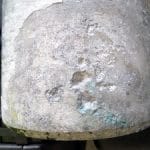
How corrosion weakens cylinders
Corrosion weakens cylinders by creating holes (pits), thinning the wall thickness, creating cracks and developing linear crevices that can cause the cylinder to rupture. Pits are unique in that during the process of the chemical reactions, which corrode the metal, the reaction stays isolated within a small area. The electrolysis continues within this isolated area, drawing away oxygen molecules from the surface area surrounding the pit. The process reduces the oxygen molecules around the surface of the pit, which lessens the corrosion in this zone, which can help prevent the pit from broadening. However, the pit continues to get deeper as long as the electrolysis continues.
A similar process occurs in line corrosion (interconnecting pits), general corrosion or stress corrosion. Stress corrosion cracking can occur in steel and aluminum cylinders (Cottis, 2000). Although It occurs in both steel and aluminum cylinders, but appears to be slower in aluminum. A key component in both cylinders, which causes this type of corrosion, is hydrogen. Don’t forget that water, H2O, contains two hydrogen atoms and an oxygen atom, both components necessary for the corrosive process. Both steel and aluminum are affected by H2O, but those metals, when produced to handle higher pressures, are more susceptible. Stress corrosion cracking becomes a greater problem above 1000MPa (Cottis, 2000).
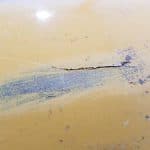
Cylinder inspectors must ensure they inspect all cylinders for corrosion and cracks. Many inspectors have an opinion that cracks or corrosion are only probable in specific types of cylinders. As an example, some only inspect 6351 aluminum alloy cylinders for cracks, while failing to check 6061 alloy cylinders. They also pay closer attention to steel cylinders for corrosion while paying less attention to aluminum cylinders. The inspector must understand that no matter the cylinder material, they are all susceptible to cracks and corrosion due to their environments. Care and caution must be taken to inspect the threads, crown region, side walls and base for signs of corrosion. If cracks or corrosion are located, they must be assessed to determine if the cylinder is safe to remain in service.
Cautions (tumbling / whips / abrasions)
Research continues to find ways to prevent corrosion. When dealing with cylinders, common prevention techniques are the maintainability of the natural oxide barriers created during the manufacturing process and developing protective layers to aid in the prevention of electrolysis. Applying a barrier, such as paint, to the exterior may go a long way in preventing the corrosion process. However, if this barrier is broken, the corrosion process will begin since the cylinder is exposed to the environment. In order to protect the cylinder all barriers need to stay intact.
However, basic inspection techniques may damage a barrier without the knowledge of the inspector. If the inspector sees a suspicious area on the exterior of the cylinder they will likely clean the area to get a better assessment. This cleaning process will likely remove any protective barrier exposing the metal to the elements.
When viewing the interior of the cylinder, probes are used to assess the level of damage. These probes can scrape the interior protective layer, exposing the interior to possible corrosion in the presence of moisture. If it is determined that a cylinder needs cleaning, the cleaning process may remove the contaminant but may also remove any protective barriers. During the process of safety inspections, the inspector may be exposing the material to the electrochemical oxidation process.
Prevention
The best protection from corrosion may be awareness. If a cylinder were to be ignored, the natural barriers may erode, and corrosion continue without any monitoring. However, with a diligent inspection, natural protections may be removed, exposing the metal. Proper protection procedures would be to monitor existing barriers and the cylinder condition. Be aware of inspection techniques which remove the barriers and keep them to a minimum. If a barrier is removed, can it be replaced? If damage is located on the exterior of the cylinder it might be necessary to remove paint. After the assessment, if the cylinder is still found to be safe for continued service, can another barrier be added? Can new paint be added as a new barrier? Reducing the metal’s exposure to the elements, reduces the corrosion process.
Internal removal of a barrier may be difficult to replace. Many factors, such as the gases stored and the use of the cylinder may have a limitation on the steps to restore a barrier. Excessive corrosion inside a cylinder may require a tumbling or blasting process. This process will remove the natural oxide barriers.
Adding a protective component inside the cylinder is more complicated. What can you place inside the cylinder that will protect the metal, but not cause harm to the user? If you consider a breathing air cylinder, you must consider any products being safe for human consumption. You can’t apply a paint or oil substance (petroleum product), as they will not be safe for the end user. A petroleum product may be a fantastic barrier for protection from corrosion, but not safe for the use of the cylinder. Your only option may be NOT to replace the barrier, leaving the metal exposed. In that circumstance you would need to maintain a regulated inspection cycle to ensure that the exposed metal is not exposed to excessive corrosion. Once the barrier is removed, it is susceptible to corrosion and weakening.
Cylinders are created with very high standards. They also have man made barriers to corrosion (paint) as well as natural oxide barriers to prevent or lessen corrosion. However, during safety inspections, there is the possibility of removing these barriers. The inspector must be aware that removing that barrier unnecessarily can cause harm. The decision to remove or damage the barrier during the inspection process must be a consideration. Only remove the barrier when necessary to further evaluate a concern and, if possible, replace the barrier after the inspection. Keeping a cylinder protected will lengthen its life and keep the users safe.
(n.d.). Retrieved from corrosionpedia.com: https://www.corrosionpedia.com/definition/1619/oxide-layer
Cottis, D. R. (2000). Stress Corrosion Cracking.
Hinds, B. N. (2003). Beginners Guide to Corrosion. NPL.
Nutt, E. B. (2008). Eric Bosze and Steven Nutt. Los Angeles: University of Southern California.
Peyser, R. (1969). corrosion studies of steel scuba tanks. University of Rhode Island.
Wikipedia. (n.d.). Retrieved from https://en.wikipedia.org/wiki/Corrosion
Copyright © [hfe_current_year] [hfe_site_title] | Powered by [hfe_site_title]
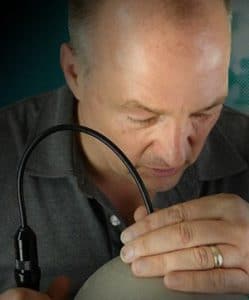
I enjoy continuing to build the business based on safety since 1999. CTS focuses on the inspection of high pressure cylinders, the maintaining of the valves and basic maintenance of high pressure compressor systems. CTS stays current in techniques and tools to train both the new and novice employee. We publish articles, update training tools and have created an APP to assist during the inspection process.
#cylinder #safety #hazmat #training #cylinderinspectiontraining #cylindex

Uncover the importance of gas cylinder inspections and training. Dive deep into ensuring safety, boosting efficiency, and prolonging cylinder life.
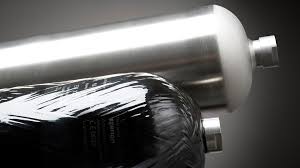
Is your composite cylinder showing signs of wear? Discover when to seek a professional repair service in our comprehensive guide.
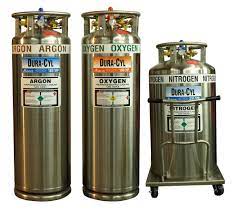
29 CFR 1910.101 intro Handling cryogenic cylinders involves working with extremely low-temperature gases that pose unique safety risks. To ensure the safe handling, storage, and transportation of these hazardous materials,
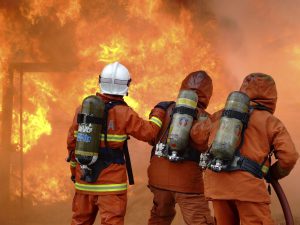
Introduction Firefighters encounter many risks while on duty, including hazardous materials and high pressure bottles. High pressure bottles are used for a variety of purposes in firefighting, including powering hydraulic